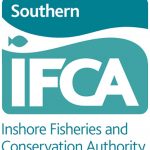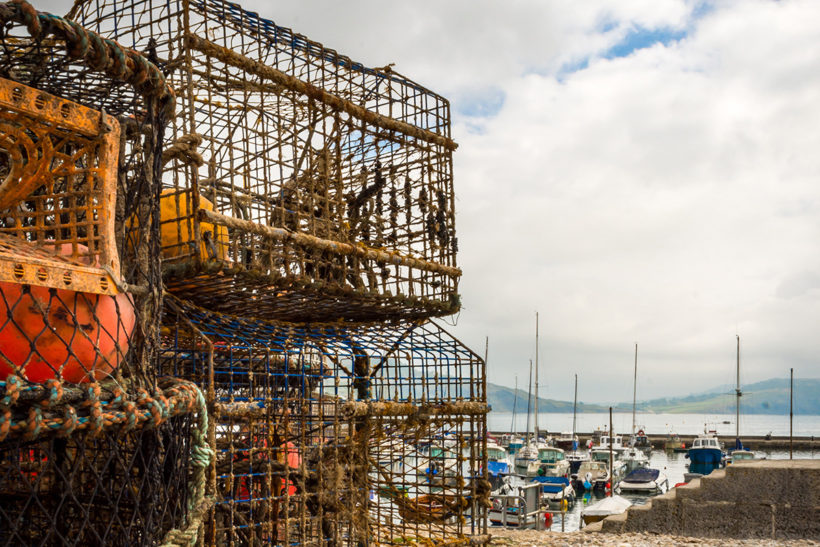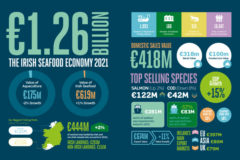The Southern IFCA (SIFCA) has opened a consultation on the new potting byelaw that will require all pots in the district – both hobby pots and those fished from commercial fishing vessels – to carry a tag.

Under the proposals, the IFCA will have the power to place a limit on the number of permits issued, or the number of tags, although no ceiling is proposed in the consultation.
The consultation, which closes on 12 May, is subject to the statutory Byelaw Impact Assessment, available on the Southern IFCA website, along with supporting evidence and the draft byelaw itself.
Retired Cefas fisheries scientist Dr Mike Pawson reviews the impact assessment below.
Management of pot fisheries in the Southern Inshore Fisheries and Conservation Authority district is currently through Minimum Conservation Reference Sizes (MCRS) under national and European legislation, whilst pot-fishing effort is largely unregulated. The aim of this byelaw is to prohibit the use and storage of pots in the district, unless such activity is authorised by a Commercial Potting Permit or a Recreational Potting Permit.
It responds to the need for management of pot fisheries raised by the fishing community in recent years and developed through the authority’s Inshore Potting Review. It is claimed that there is evidence that whelk, edible crab and lobster stocks are declining, with a risk to the sustainability of these fisheries at current levels of fishing effort.
The Southern IFCA seeks to ensure fishing activities operate in a sustainable manner and can be managed appropriately, according to best available evidence, as comprehensively laid out in the Evidence Package.
The Commercial Permit applies to pots fished for crab, lobster, spider crab and whelk. Though the trap fishery for cuttlefish (Sepia officinalis) is documented, it does not appear to be covered by this byelaw. Also, ‘crawfish’ (spiny lobster Palinurus elephas) is listed, but no specific information is supplied.
A number of conditions apply, to limit the number of pots in use via a tag scheme identifying pots to authorised fishing vessels, and to avoid capture of undersized shellfish by implementing escape gaps (for crustaceans).
There is a significant recreational pot fishery, particularly for lobster, within the district, which is considered to be under- regulated and of an unknown scale. The Recreational Permit applies similar conditions to the same species, introduces daily catch restrictions and a pot limit (five), and requires permit holders to record daily catch and submit an annual return to the IFCA.
Over the period 2015 to 2019, landings of edible crab and European lobster within the district have declined by around 40%, and there is generally reliable information on stock status through regional stock assessments conducted by Cefas and reported to ICES. Southern IFCA suggests that these indicate that fishing effort on edible crab is close to that which should achieve Maximum Sustainable Yield (MSY), and that the spawning stock is also close to the level required for MSY. However, the Cefas report of 2019 states that stock status for edible crab in the eastern English Channel is currently unknown. This needs to be checked.
Catch data specific to vessels fishing within the Southern IFCA district show an overall decline of more than 26% in the Catch Per Unit Effot (CPUE) for edible crab between 2010 and 2018, though crab catches did improve in some areas (e.g. south of the Isle of Wight and in Poole Bay).
For lobster, Cefas reports that fishing pressure is occurring at levels above MSY, and that the stock size is below reference levels. Southern IFCA estimates that the CPUE of lobster throughout the district has not changed between 2010 and 2018, though there was a decline in lobster catches generally south of the Isle of Wight, in the western Solent, in Poole Bay and around the Purbeck coast. There was an improvement in lobster catches around Weymouth and in Lyme Bay.
At present, the whelk fishery is managed only through an MCRS, which is below the size at which they can breed, and it is uncertain whether this protects the whelk population from overfishing (it depends on the exploitation level). There is no stock assessment for the whelk fishery in the Southern IFCA district. Whelk fishing activity within the district reduced by more than half between 2015 and 2019, accompanied by a 50% decline in the landed catch – typical for a whelk fishery that has operated in a ‘boom and bust’ manner. There appears to be widespread support within the industry for the introduction of effort control measures (pot numbers per vessel) to help sustain the fishery and potentially stabilise market supply.
The consultation also presents an assessment of the likely impacts and costs of implementing this byelaw, based on local IFCA knowledge, the number of pot fishers registering to fish for sale, estimates of the maximum number of pots deployed, and enquiries regarding recreational use of pots within the Southern IFCA district.
The main cost will be to whelk fishers, who may also have to remove excess pots from the district. Fishing News readers will have a much clearer view than me on the veracity of estimated costs to industry.
Scoring: There is potentially a good basis for the information presented. However, I am baffled by the inclusion of crawfish, and the absence of any discussion on the need or options for regulating the cuttlefish fishery. Another concern is the apparently inaccurate reporting of the latest (2020) Cefas edible crab stock status report.
Grade awarded: C
This story was taken from the latest issue of Fishing News. For more up-to-date and in-depth reports on the UK and Irish commercial fishing sector, subscribe to Fishing News here or buy the latest single issue for just £3.30 here.






